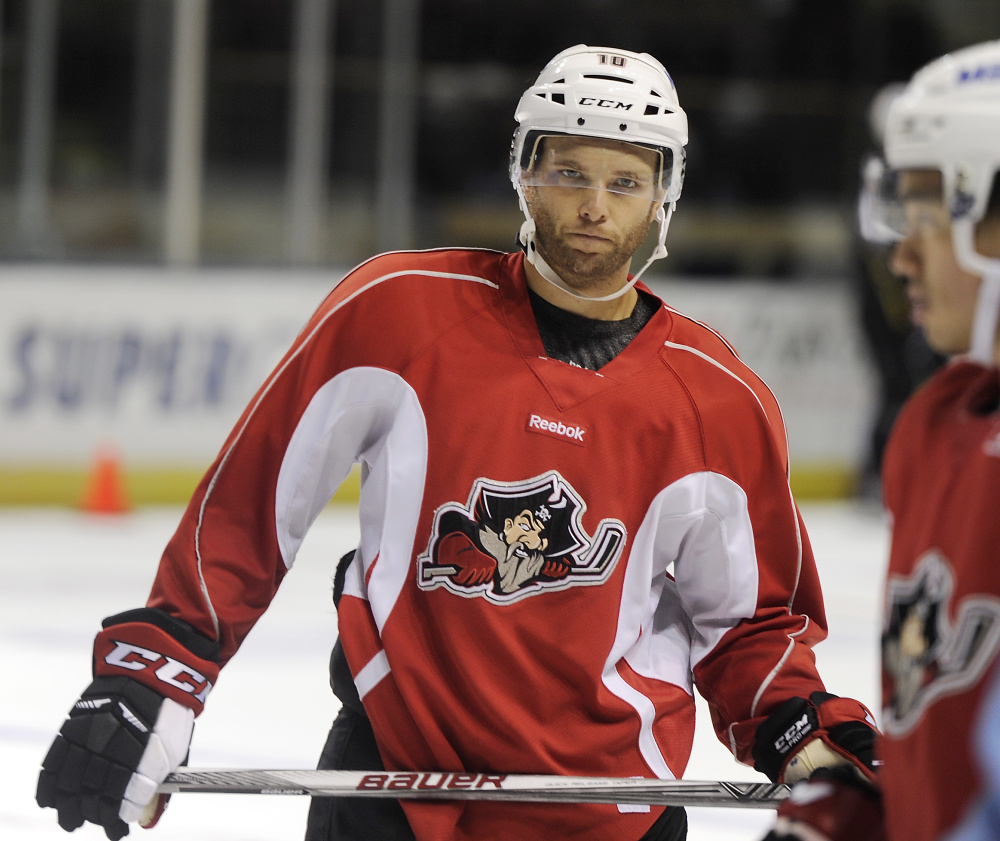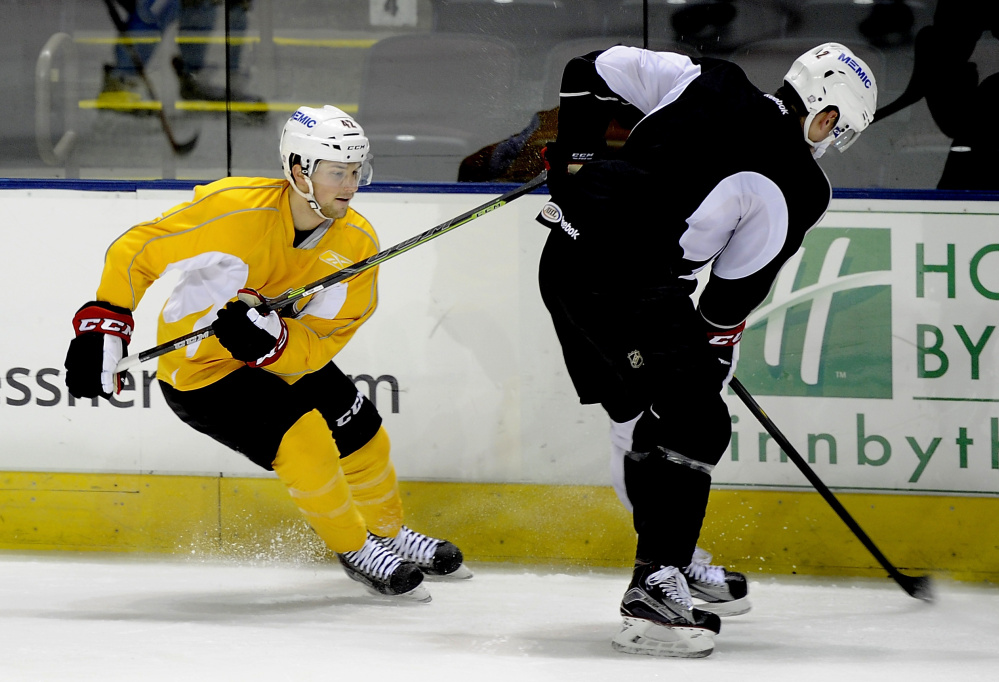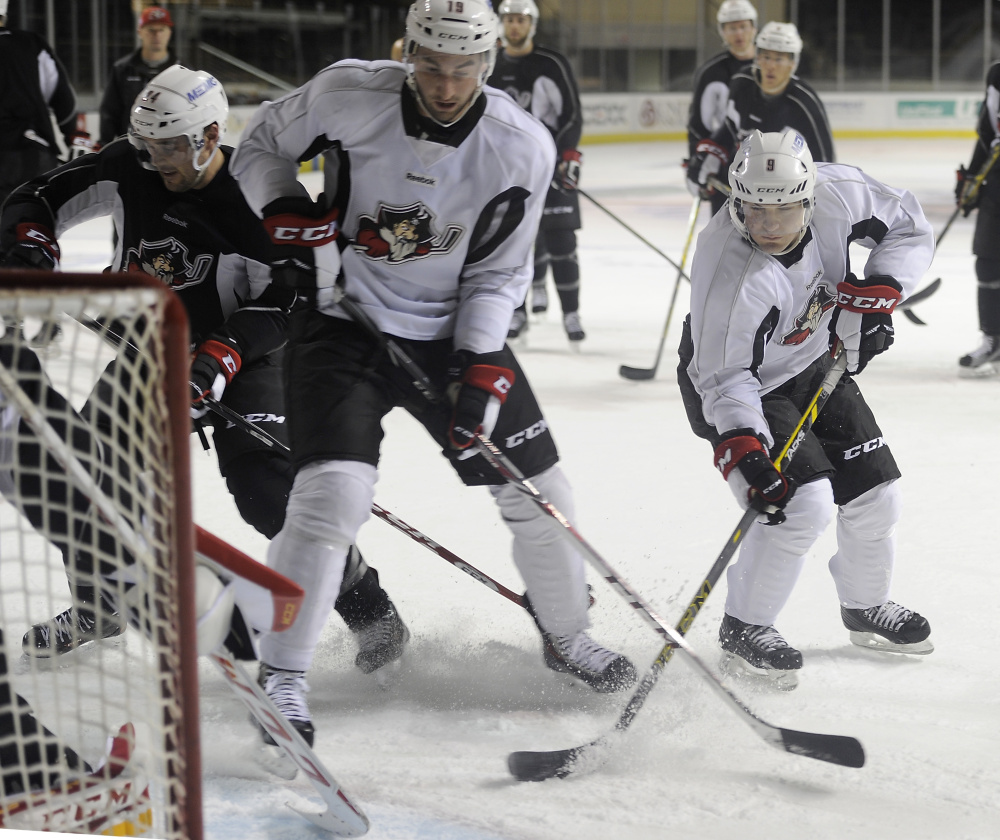Three games is a small sample size, hardly enough to draw any conclusions about the Portland Pirates and their prospects in this young American Hockey League season.
Even so, the fact that their two leading goal scorers are, well, small, is significant.
Both Rob Schremp and Kyle Rau have scored three goals and contributed one assist to help the Pirates to a 2-1 start, sweeping Hershey at home after dropping the opener at Providence.
Schremp is no shrimp, but at 5-foot-10 and 184 pounds, he’s not likely to overpower anyone. Originally drafted in the first round by Edmonton in 2004, Schremp is back in the AHL after four seasons in Europe.
“Watching a lot of it on TV from over there, it seemed like the game was making a little bit of a turn,” said Schremp, 29. “I thought my game could fit back in over here.”
Rau, at 5-foot-8, is seven years younger and last winter was playing for his hometown Golden Gophers at the University of Minnesota. His next game will be the 11th of his professional career, so he didn’t experience the thickets prevalent in pro hockey a decade ago.
“There’s space for smaller guys now,” Rau said. “I don’t really know anything different. Every once in a while, they’ll (show) Classics on NHL Network and you can see how much different it is.”
Size and strength mattered more in years past, when clutching and grabbing could put the brakes on diminutive speed demons. Such tactics were effective, but did little to enhance the elegance of the game.
“Fans don’t want to watch dump and chase,” said Tom Rowe, the Pirates’ head coach who said rule changes have led to a much cleaner AHL experience than when he was coaching in Lowell (2001-2006) and Albany (2006-2008). “The game now is so much faster and has so much skill.”
Rocco Grimaldi, who at 5-foot-6 is Portland’s shortest player, is a second-year pro who already has seven NHL games under his belt. He said a lower center of gravity gives him an advantage.
“I have guys tell me all the time that it’s so hard to knock me off the puck because I’m so low,” said Grimaldi, who said he also tends to draw penalties when opponents make contact with his upper body. “If you’re coming up high, it’s going to be high on me, which is (often) going to be a high stick or a … cross check.”
Growing up in Southern California, Grimaldi said he has always been the smallest and youngest player on every team. He quickly learned to exploit the size difference.
“I can get from A to B really quick, as compared to the big (defensemen) who have to use those long legs to get moving,” he said. “I have short legs and they get going quickly.”
Schremp broke into the AHL in 2006 with Wilkes-Barre/Scranton and spent two full seasons in Springfield before gaining a foothold in the NHL with the New York Islanders. He scored 20 goals in 114 NHL games with New York, Edmonton and Atlanta before deciding to try his luck across the Atlantic and wound up playing in Sweden, Latvia, Russia, Austria and Switzerland.
“I’m from a small town in upstate New York, so to see the world was amazing,” Schremp said. “I’ve seen places I never dreamed of seeing.”
Scott Allen, Portland’s assistant coach, held the same position with the Islanders while Schremp was there from 2009-2011 and gave a positive recommendation to Portland’s parent NHL club, the Florida Panthers.
“We’ve asked him to pay attention to his play without the puck,” Rowe said of Schremp. “Offensively, he’s pretty much got a green light to create. I don’t want to put any handcuffs on him because he’s probably one of the most skilled guys in the league.”
In the opener at Providence, Schremp gathered in a Shane Harper pass from the side boards to the slot and, with a slick spin move, sent a blind backhand feed to Rob Flick for an easy goal. It was the sort of tic-tac-toe scoring play that league officials envisioned when they tweaked the rules to reduce hooking, holding and otherwise interfering with players whose talent outstrips their size.
“It balances it out for the guys who aren’t 6-3, 220,” Schremp said. “It gives me a chance to use my skill set: my hands and my vision. It also allows guys like Harper to use his wheels. Once he gets going full speed, you can’t hook him, you can’t hold him. Where it used to be, that was the play. If you saw a guy with speed, you’d try to can-open him or hold him for a second so someone else had time (to recover).”
Those days, Schremp said thankfully, are in the past.
“Now you have to make smart, skilled plays,” he said. “That’s the new game.”
Send questions/comments to the editors.





